During hunting season, it can take days or weeks to locate the animal that you are pursuing and you may only have seconds to take a shot. As hunters, we must quickly evaluate how much time we have to build a shooting position, establish the distance to the target, wind speed, and shot angles.
Don’t let your hunt be the first time to try out a shooting position or engage a target at a specific distance. Knowing your limitations as a marksman, before heading afield will help to determine what is ethical for your hunting scenario. Because each situation is so vastly different, there are a few fundamental positions that you will want to practice before your hunt in-order to increase your level of confidence and downrange success. This includes, prone, sitting, kneeling and standing positions.
As the distance to your intended target increases, your rifle groups broaden and the margin of human error increases. Practice will help to establish your limitations in regards to accuracy from each position at varying distances while using all of your available resources to aid in the creation of a solid rest.
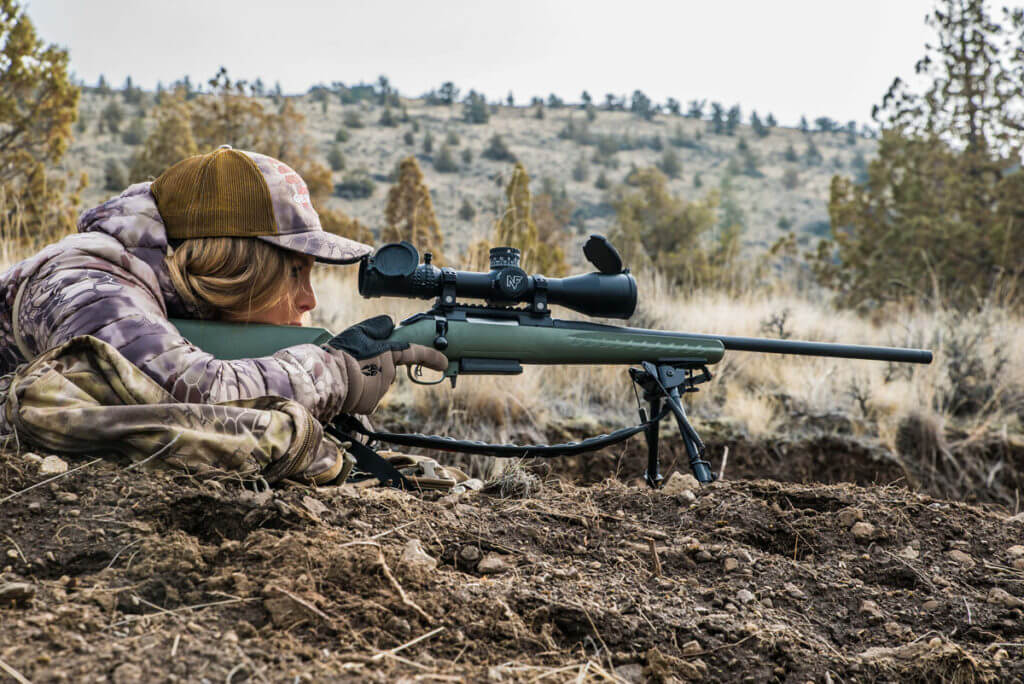
Typically, the closer to the ground you can get, the more stable your shooting position is going to be. If you can get into a prone position, then do it. When setting up, pay attention to the presence of brush or rocks that might be in the line of bore that is not in the line of sight from your rifle scope. The last thing you want to do is shoot the rock or bush that is in front of your line of bore instead of your intended target.
Having a bipod on the forend of your rifle may provide the needed amount of elevation to grant a clear line of bore. Also, a bipod that pivots will help adjust the level of rifle cant on an uneven surface or slope. Legs with adjustable notches can also help to level the rifle for uphill, downhill or side hill shooting. Practice manipulating your bipod to ensure ease of operation while under pressure. In order to support the buttstock of the rifle, consider practicing with items that you will have while afield such as a jacket or backpack.
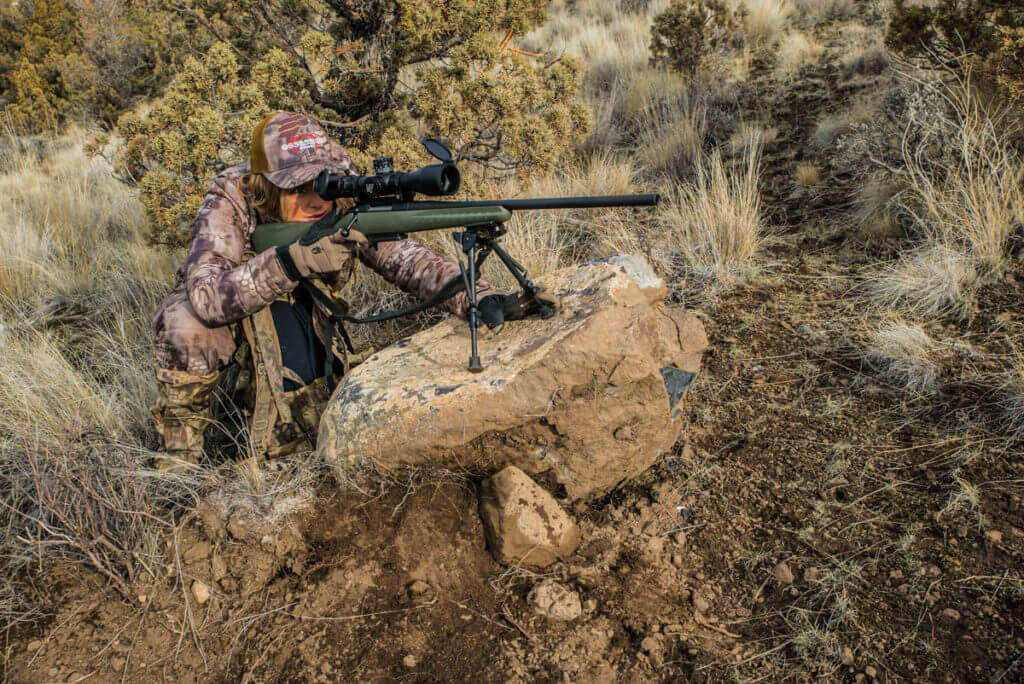
If present, natural terrain features such as fallen logs or rocks can serve to create a stable shooting position. You will have to evaluate what position you can create while in practice and during your hunt. The next most stable position to prone would be modified prone. This is similar to prone but the shooter’s body is laying partially over an object such as a large rock or stump.
Landscape and/or vegetation can make taking shots from the prone impossible. Sitting or kneeling is the third best option for stability. Try to locate a suitable terrain feature or even an old fence that you can rest your rifle directly upon. This can be accomplished with or without the use of a bipod, however, there may be advantages to using a bipod as noted above.
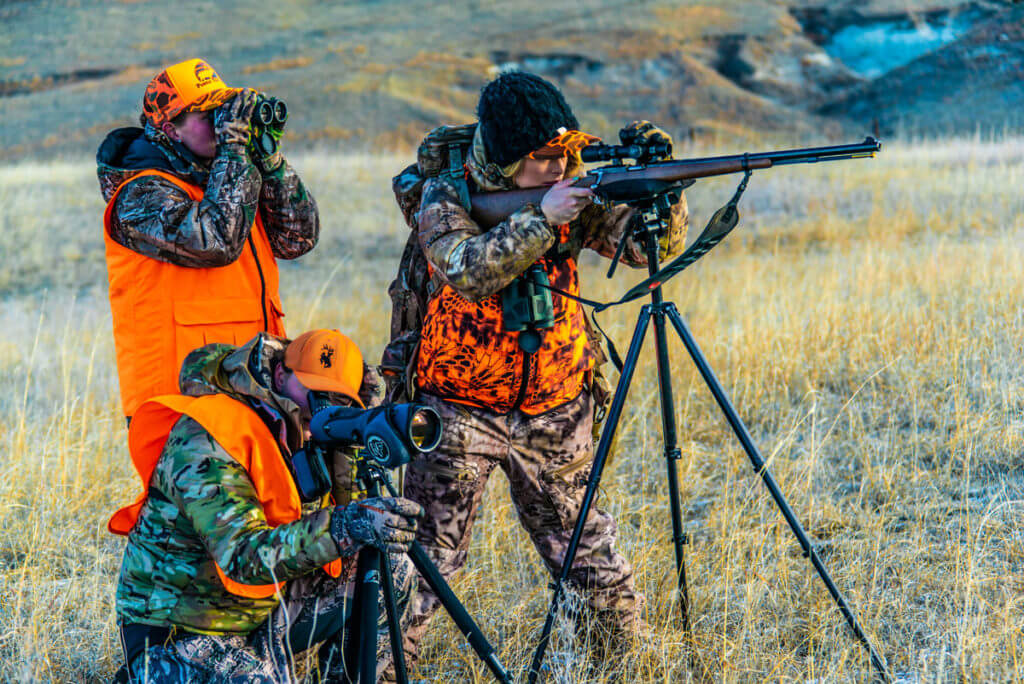
Stability is greatly increased with the addition of a rear support. Items that you can use for a rear support would be a backpack or tripod leg. See what works best in stabilizing your shot.
Your hunting backpack may even make an outstanding rest, however, with varying construction types, you will want to test out your backpack as a rest to determine if is suitable.
A tripod will serve you afield for traditional purposes such as a glassing rest or for mounting your spotting scope, plus you can use it to create very solid shooting positions. Standing is the least stable shooting position, however, it may be your only option on a hunt and a tripod can make standing shots extremely stable.
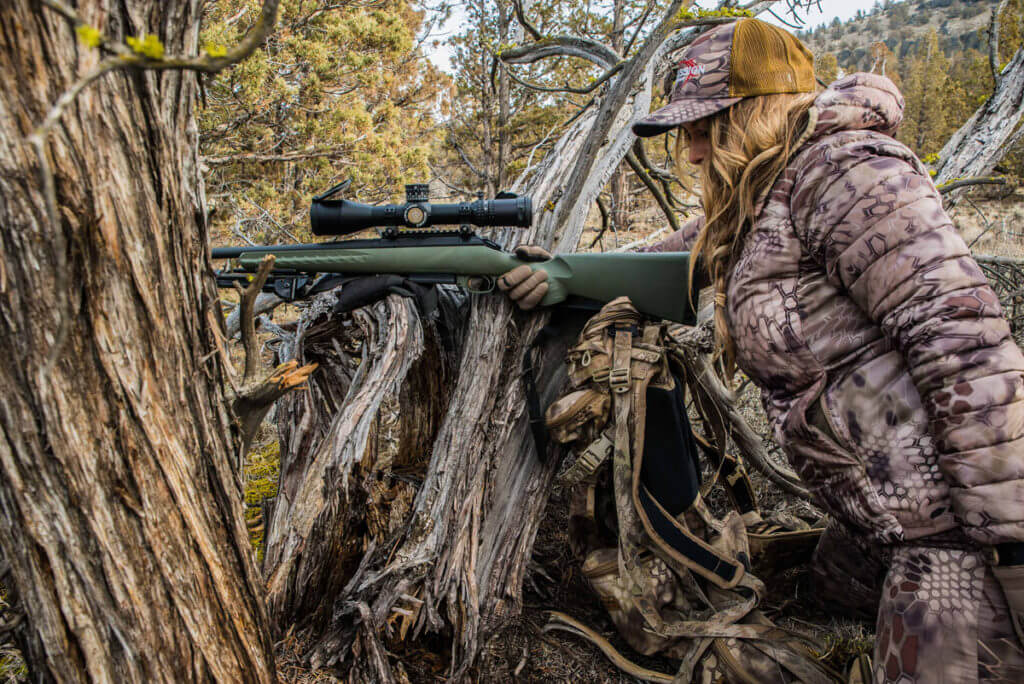
While at home, practice evaluating terrain for tripod shooting. Do you need to prepare for a sitting or kneeling shot? Or, will thick ground cover force you to shoot from the standing? Having the ability to predetermine your most likely shooting position will allow you to adjust your tripod legs to the correct height in advance, especially on an active stalk. This will shorten set up time when you need to quickly execute a shot. From the standing position, practice controlling where the optic reticle is on the target with a quick adjustment of the width of your stance.
When used correctly, a tripod is not only extremely stable but is also very time efficient. When it comes to positional shooting practice, don’t underestimate the value of dry fire practice.
If you plan to hunt with a partner, practice at the range working in shooter, spotter pairs. This will allow you to establish a communication style so that you can easily work together while afield. This is especially helpful if you spot an animal in a herd. Having a trained hunting partner allows them to keep eyes on the animal while you set up your shot and follow the animal’s movement after the shot breaks. Let them help you relocate the animal.
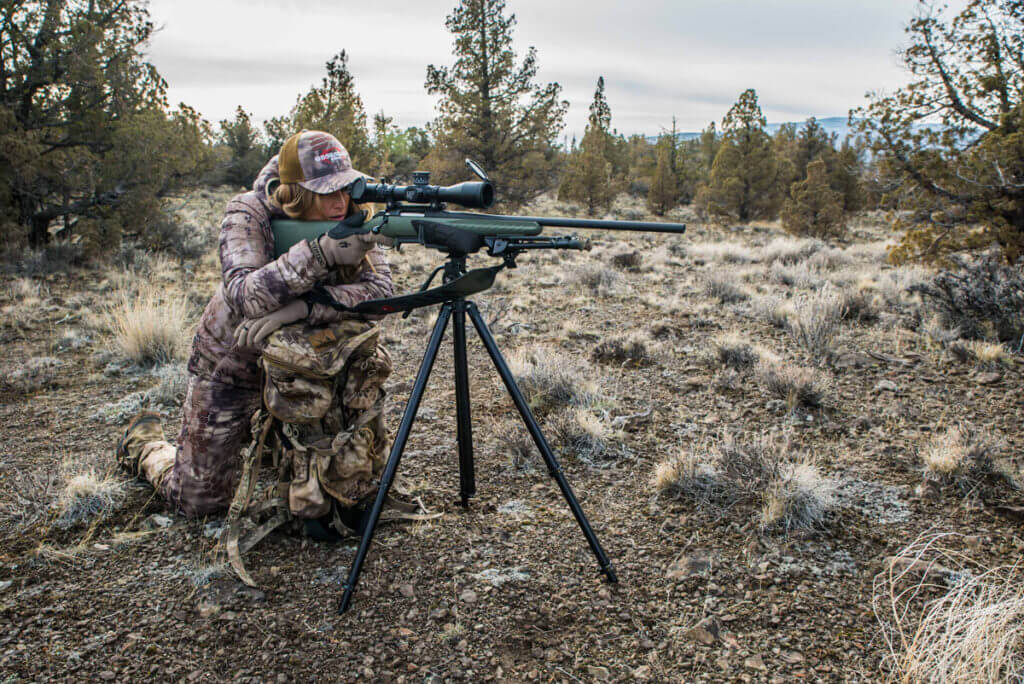
People tend to want to come off the scope and look with their eyes for the animal, however, I promise that you can see much better and be more prepared for a possible follow up shot by continuing to look through your rifle scope. You can practice this at home by staying behind the scope to view impact instead of having the knee jerk reaction of popping your head off the scope to “look”.
If the animal has moved and you need a wider field of view, instead of coming off the rifle, simply reach up to your rifle scope and lower the magnification. After you have relocated the animal, if needed, you can increase the magnification. Even if the animal goes immediately down, stay on your rifle and be ready to make a follow-up shot until you are certain that the animal has expired. This can also be practiced at home by placing two targets separated by a change in direction and possibly distance.
As a hunter, practicing realistic hunting situations will help to ensure that when the moment of truth arrives and the animal of your dreams is in your crosshairs, you have done everything possible to be quick, efficient, and most importantly ethical when breaking your shot.

When using hasty supports like rocks or stumps, do a quick look for rattlesnakes before you, in the heat of the moment, just plop down into your position. Dont ask how I know this.
Sound basic advice from a real hunter not a desk jockey. Kristy has a quick mind and a true ethos for the hunt.
Was advised a couple years back to practice with tripod and shooting sticks before going on a plains game hunt….glad I did because 90% of our shots were like that